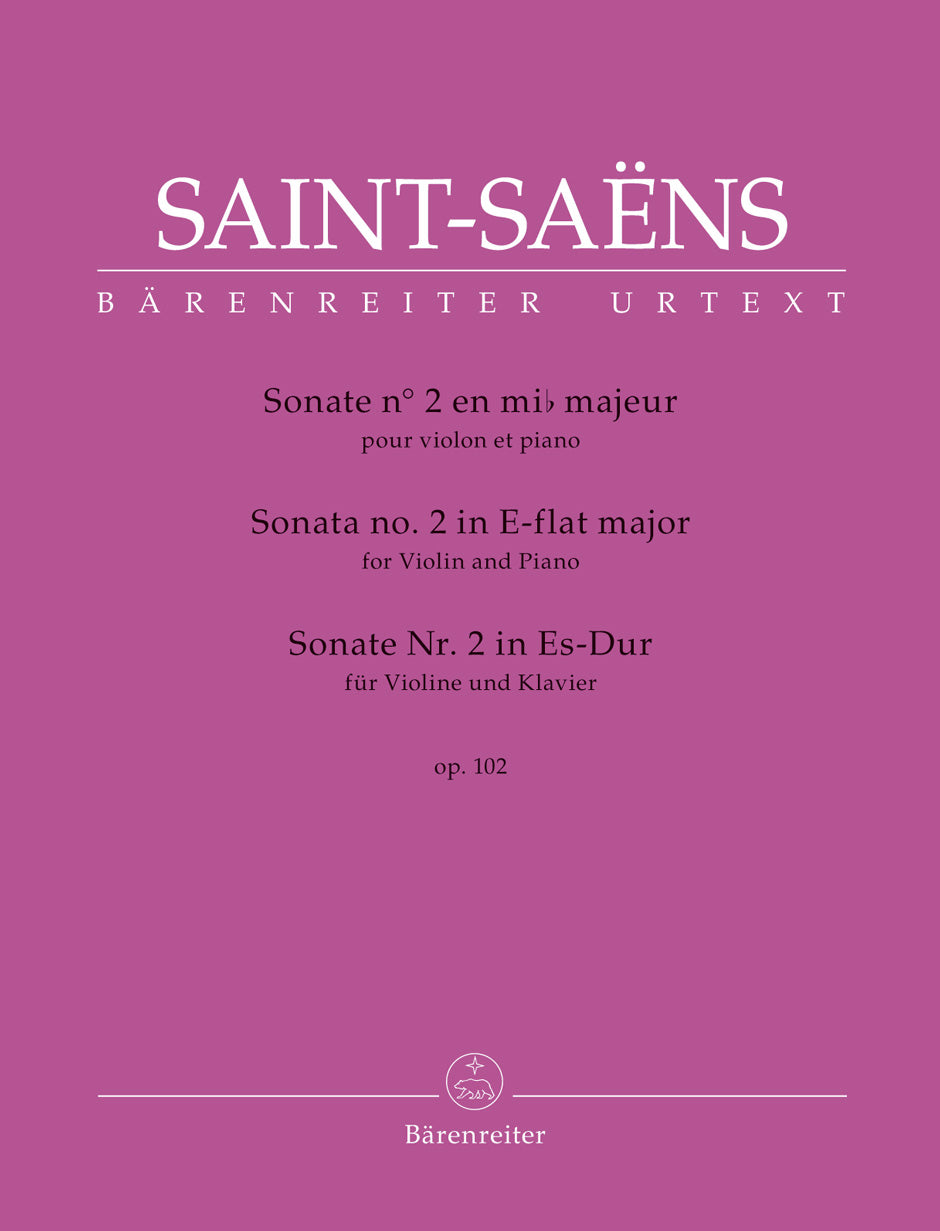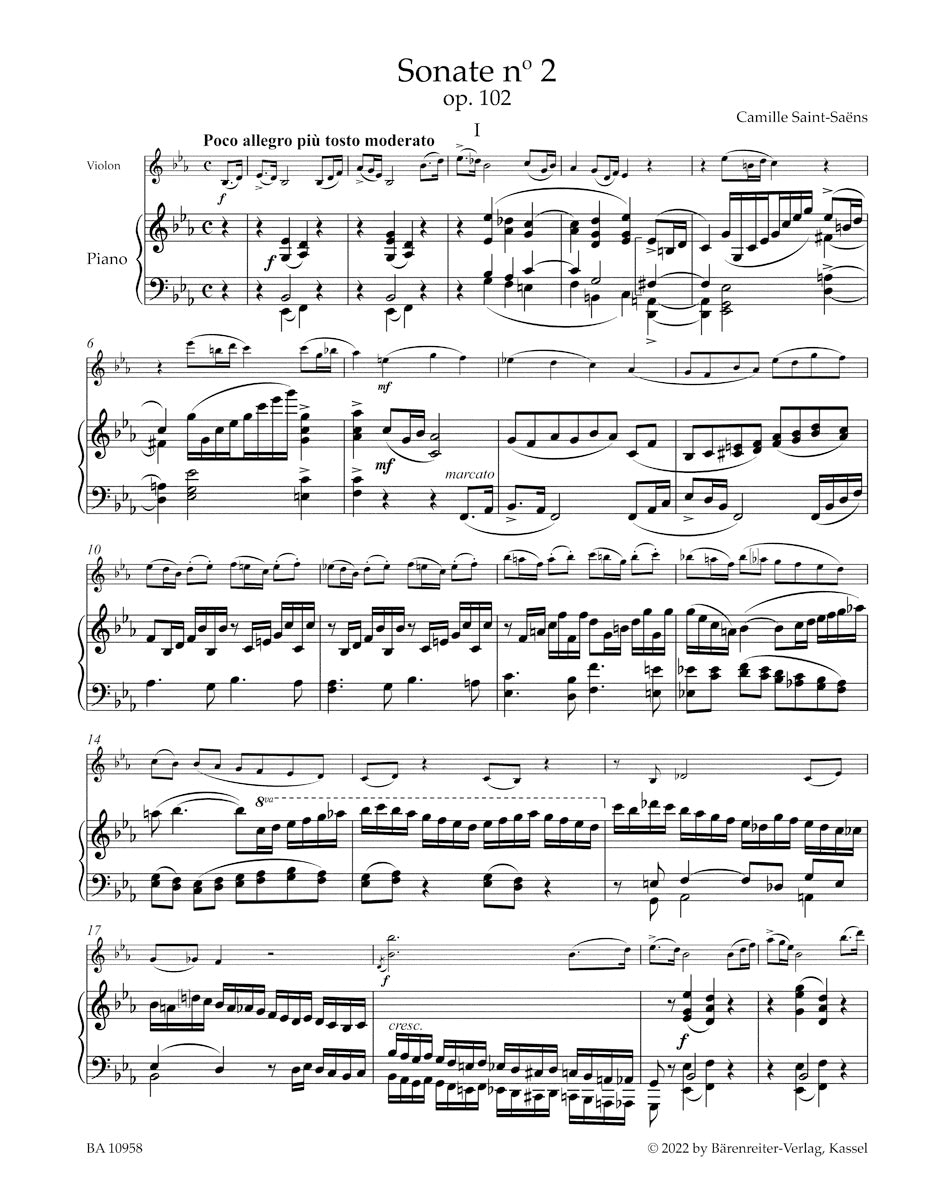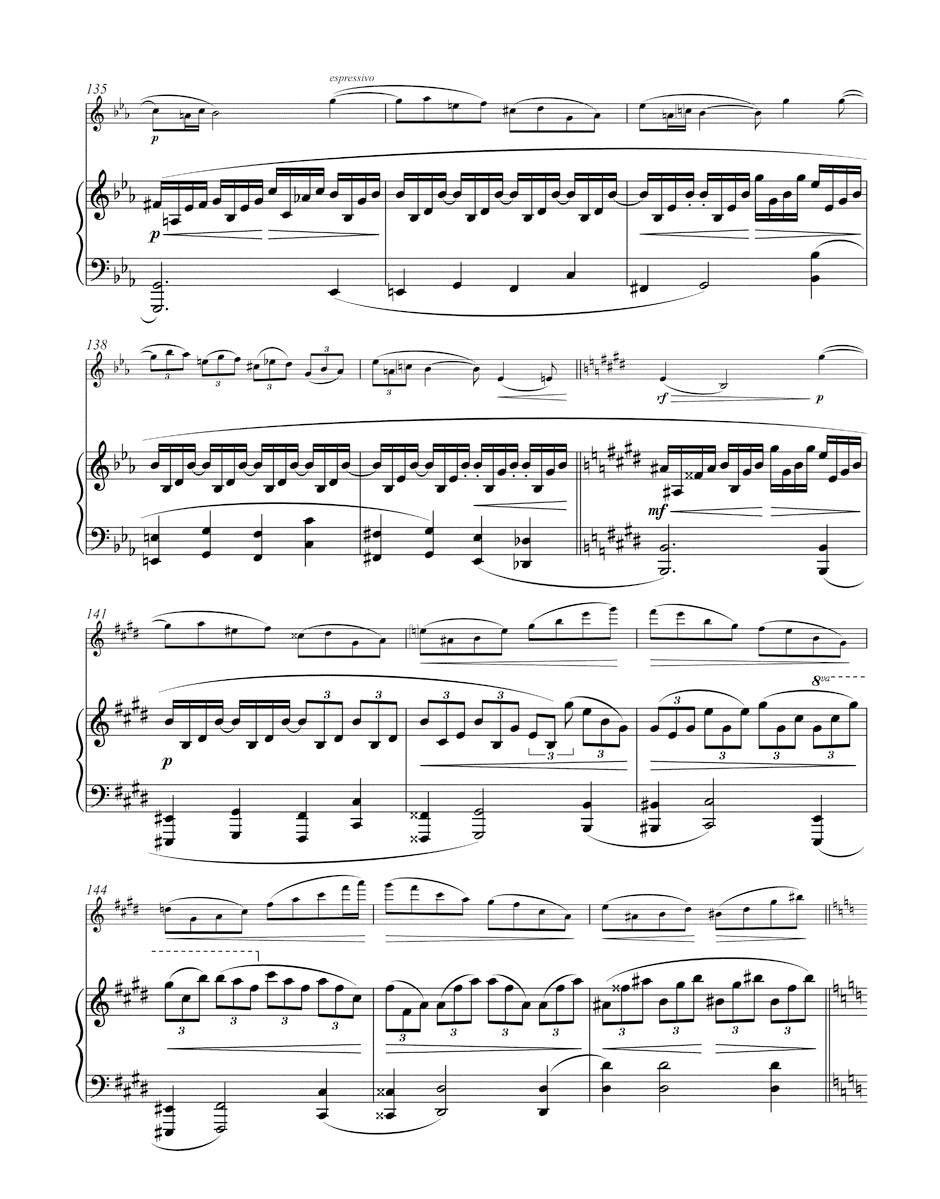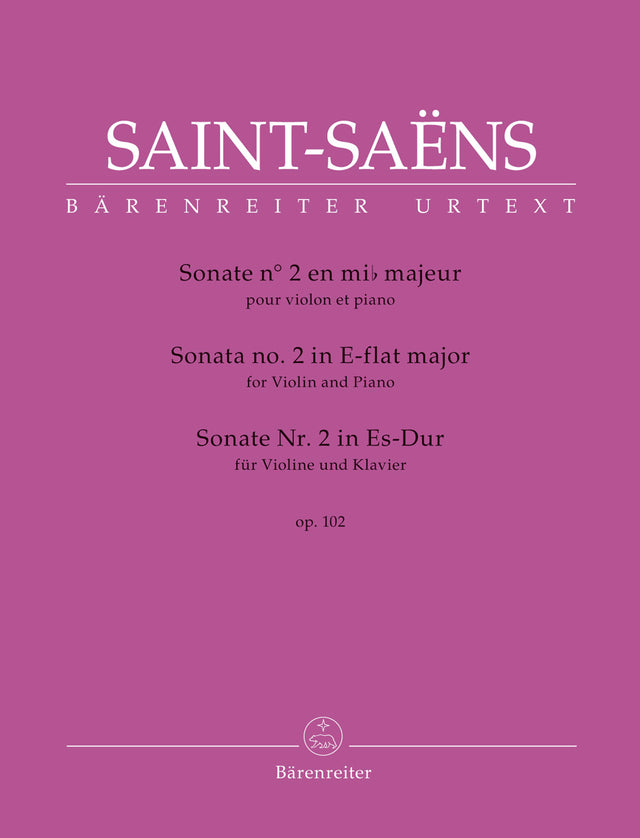Saint-Saëns: Violin Sonata No. 2 in E-flat Major, Op. 102
In stock and typically ships within 1 business day.
- Composer: Camille Saint-Saëns (1835-1921)
- Instrumentation: Piano, Violin
- Work: Violin Sonata No. 2 in E-flat Major, Op. 102, R 130
- ISMN:
- Size: 9.6 x 12.2 inches
- Pages: 54
- Urtext / Critical Edition
Description
The second half of the 19th century represented something of a "Golden Age" of the violin sonata in France: Influential violin sonatas such as those by Franck, Fauré and Saint-Saëns were among the successful works of this genre, inspiring many further compositions.
Saint-Saëns' Violin Sonata No. 2 was written in 1896 during a stay of several months by the composer in Egypt: he began the main themes of all four movements as well as the canonic trio in Luxor and Aswan. The sonata was then completed on the Nile journey back to Cairo. That same year the sonata was premiered by Saint-Saëns and Pablo Sarasate in a concert celebrating the composer's fiftieth stage anniversary. Astoundingly, he had first appeared on stage when he was only ten years old.
This performing edition edited by Fabien Guilloux and François de Médicis is based on "Saint-Saëns – Œuvres instrumentales complètes", volume III/4. It reflects the most up-to-date state of research on this work which the edition presents in a spacious engraving.
Publishers use a lot of words to describe what they sell, and we know it can be confusing. We've tried to be as clear as possible to make sure you get exactly what you are looking for. Below are descriptions of the terms that we use to describe the various formats that music often comes in.
Choral Score
A score for vocalists that only contains the vocal lines. The instrumental parts are not there for reference. Generally, cheaper than a vocal score and requires multiple copies for purchase.
Facsimile
Reproductions of the original hand-written scores from the composer.
Full Score
For ensemble music, this indicates that the edition contains all parts on a single system (there are not separate parts for each player). In larger ensembles, this is for the conductor.
Hardcover
Hardbound. Generally either linen-covered or half-leather.
Orchestral Parts
Similar to a wind set, this is a collection of parts. In the case of strings, the numbers listed are the number of copies included, though generally these are available individually (often with minimum quantities required).
Paperback
When publishers offer multiple bindings (e.g. hardcover) or study scores, this is the "standard" version. If you're planning to play the music, this is probably what you want.
Performance / Playing Score
A score of the music containing all parts on one system, intended for players to share. There are not separate parts for each player.
Set of Parts
For ensemble music, this indicates that there are separate individual parts for each player.
Solo Part with Piano Reduction
For solo pieces with orchestra, this is a version that contains a piano reduction of the orchestra parts. For piano pieces, two copies are typically needed for performance.
Study Score
A small (think choral size) copy of the complete score meant for studying, and not playing. They make great add-ons when learning concertos and small chamber works.
Vocal Score
A score prepared for vocalists that includes the piano/organ part or a reduction of the instrumental parts.
Wind Set
For orchestral music, this is a collection of wind and percussion parts. The specific quantities of each instrument are notated.
With Audio
In addition to the printed music, the edition contains recordings of the pieces. This may be an included CD, or access to files on the internet.
With / Without Fingering (Markings)
Some publishers prepare two copies - a pure Urtext edition that includes no fingering (or bowing) suggestions and a lightly edited version that includes a minimal number of editorial markings.





